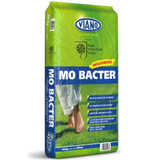Mr Middleton’s Growing Guide for Asparagus Crowns
Posted by Mr Middleton on 19th Feb 2024
Asparagus is a rewarding perennial vegetable that offers delicious harvests for many years. Follow these steps to successfully grow asparagus crowns and enjoy a bountiful supply of tender spears for 20 or more years
1. Choosing a Site
Select a sunny location with well-drained soil. Asparagus thrives in full sun but can tolerate partial shade.
2. Soil Preparation
Prepare the soil by digging it to a depth of at least 30 cm.
Incorporate plenty of compost or well-rotted manure into the soil to improve fertility.
Remove any weeds, rocks, or debris from the planting area.
3. Planting
Asparagus crowns should be planted in early spring, as soon as the soil can be worked.
Dig trenches that are about15-20 cm deep and 30-45 cm wide.
Cover the crowns with 5-8 cm of soil initially, and gradually fill in the trench as the spears emerge.
Place the crowns at the bottom of the trench with the buds facing upward.
Space the crowns 30-45 cm apart within the trench.
4. Care and Maintenance
Keep the bed well-watered, especially during dry periods, to ensure consistent moisture.
Mulch around the asparagus plants to suppress weeds and retain soil moisture.
Fertilize with a balanced fertilizer ( Mr Middleton’s Seaweed ) in early spring before the spears emerge.
Avoid harvesting any spears during the first year to allow the plants to establish a strong root system.
5. Harvesting
In the second year, you can begin harvesting a few spears, but only for a short period.
Harvest by snapping or cutting the spears when they are 15-20 cm tall and before the tips start to fern out.
Stop harvesting once the majority of spears become thin or no thicker than a pencil, typically after 6-8 weeks.
6. Fern Growth and Maintenance
After the harvest season, allow the remaining spears to grow into tall fern-like foliage.
Do not cut back the foliage until it turns yellow in the fall.
Cut back the ferns to ground level and remove any debris from the bed to prevent overwintering pests and diseases.
Apply a layer of mulch over the bed in late autumn.
Happy Gardening.
You can dowload the guide in PDF by click here










